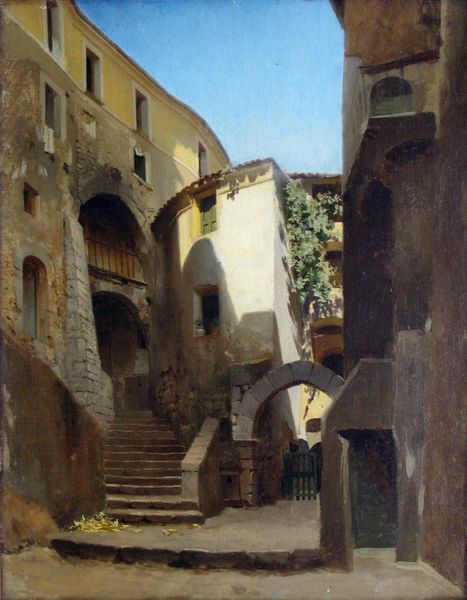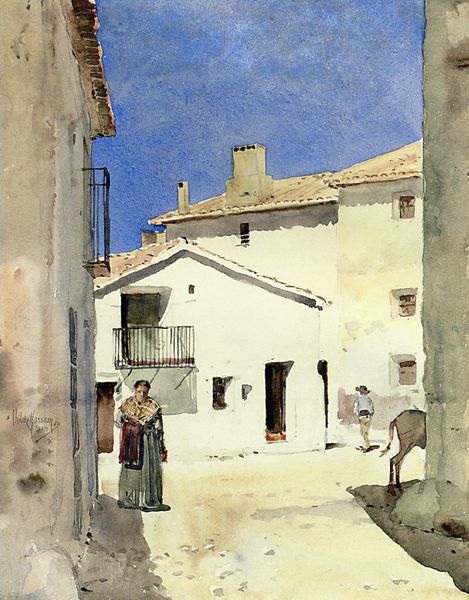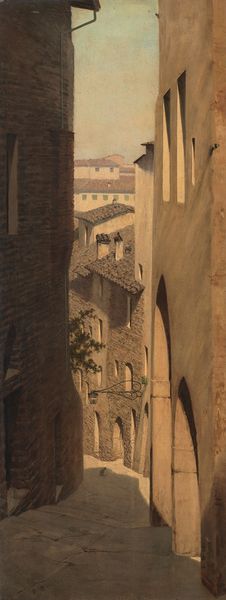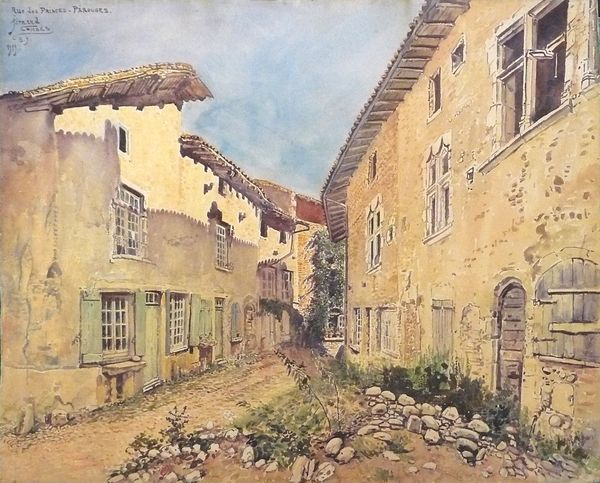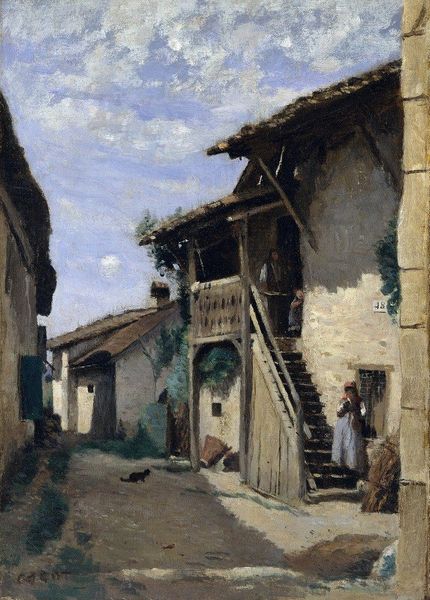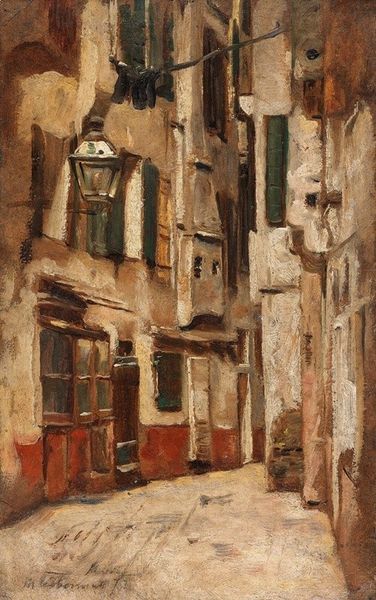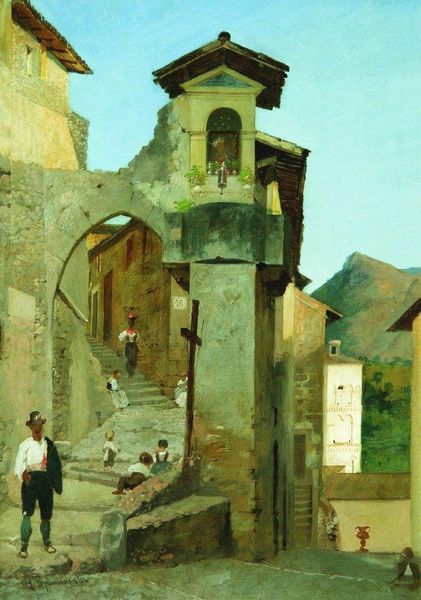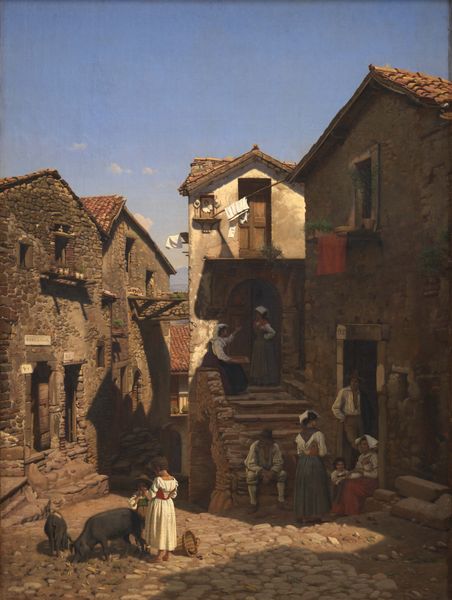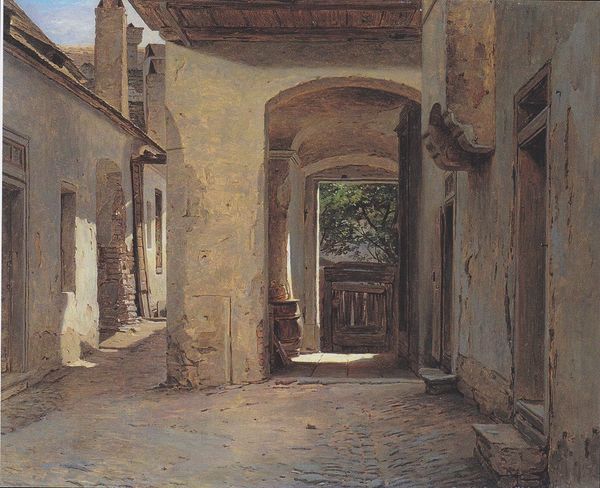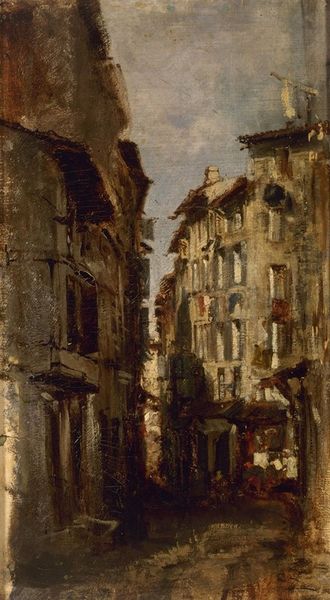
painting, plein-air, oil-paint
#
painting
#
impressionism
#
street view
#
plein-air
#
oil-paint
#
house
#
oil painting
#
cityscape
#
genre-painting
#
street
#
building
Dimensions: 75 x 100 cm
Copyright: Public domain
Curator: Painted en plein air in 1870, Telemaco Signorini's "Santa Maria De' Bardi" offers a glimpse into the heart of Florence. Editor: The light! It's striking how Signorini captures the intense, almost palpable sunlight washing over the buildings. The stark contrast creates these powerful geometric shapes. Curator: Indeed. This is where Signorini and the Macchiaioli distinguish themselves. They embrace this kind of raw, direct engagement with the urban environment. It is not a staged or idealized portrait of the city, but instead captures daily life and labor. We have figures milling about on a Florentine street as people are conducting their day, not unlike painting done by other contemporaries, such as Monet and Pissarro. Editor: I see how he departs from traditional landscape painting by focusing on the architectural details and the interplay of light and shadow. There is an element of realism at play. The brushstrokes appear almost arbitrary on closer inspection, but when viewed as a whole, it forms an immersive tableau. I'm also intrigued by the way the perspective guides my eyes upwards and into the painting. Curator: We can see an honest portrayal of the built environment here, the labor, class, and capital investment. You notice the layers in the buildings themselves. Note also the placement of figures here. Consider how this work sits within Italy's post-unification period when Italian artists sought new ways to express national identity and reflect modern life, particularly of ordinary people at the time. Editor: Perhaps it's a conscious choice to highlight the mundane rather than the traditionally picturesque aspects of Florence. His use of oil on canvas and this almost muted color palette contributes to this understated, naturalistic feeling. Curator: Absolutely. And that makes this painting a rather fascinating lens through which we might reconsider both the city's visual culture and material reality. It's not just about the aesthetics of the Italian city; it's a testament to Signorini's vision and his social consciousness in depicting it. Editor: Precisely. It reminds us how much we can discover through the simple, yet profound, act of close observation and careful representation.
Comments
No comments
Be the first to comment and join the conversation on the ultimate creative platform.

